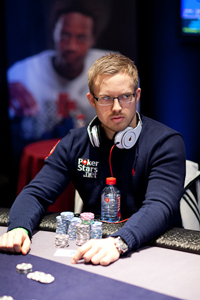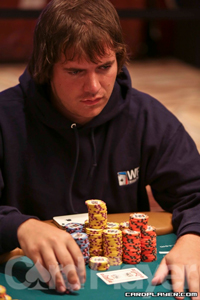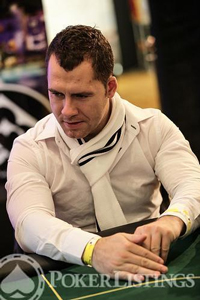
The team of researchers carried out three separate studies where a unisex panel viewed 20 two-second long video clips of professional players in action, and then asked them to rate the hands they were holding based on their live tells. The panel was asked to pay particular attention to either the face or their arms.
Once the output was interrogated it revealed that guesses based on facial reactions were poorer than random guesses, and the assumptions made on the value of the arm movements were better than chance. The research team also found that players were able to conceal their identity by creating false facial expressions that was not replicated in strength or weakness of arm movement.
“Even though professional players may be able to regulate their facial expressions, their arm movements could betray the quality of their poker,’’ said the researchers. “So, players’ intentions may be visible from their actions while moving poker chips to place bets.’’
Opinion differs wildly on the value of tells in live poker. Some professionals believe they are invaluable, others believe it’s nothing but poppycock, and others look like they are using it to their advantage and yet don’t really have much of a clue.
The research team believe that motor actions can betray intentions, and theorize that the smooth movement of arms and hands could be seen as a sign of confidence, whereas the less fluid motions can be seen as a sign of anxiety. Am I the only person in the world who gets equally anxious when I have the nuts or a bluff?

There are three players that I watch regularly who all have very distinctive and smooth arm and hand posture when depositing chips into a pot: Marvin Rettenmaier, Mike McDonald and Martin Jacobson.
When Jacobson has entered a pot, he will always stretch his arms out either side of his chips, to display a very strong posture. He then accentuates this by staring at his opponent throughout the entirety of the hand. His image conveys a sense of, ‘come and have a go if you think you’re hard enough.’ His posture makes him look much bigger than he is and he is an intimidating presence.
Both Rettenmaier and McDonald have their own style of depositing chips that also oozes confidence. Rettenmaier will pick his chips up and in a very slow and deliberate motion will lengthen his arm across the table before very gently dropping the chips onto the felt. All the time he does this his face is deadly serious and always staring straight ahead in line with his arm. Whereas Jacobson stays completely still, Rettenmaier can often be seen riffling chips with his right hand, whilst his left always covers his cards.
McDonald has a somewhat similar style to Rettenmaier. He picks the chips up with his left hand and just like Rettenmaier; he very slowly extends the arm outward, except this time a lot higher than Rettenmaier, before dropping the chips with a thud. He will then maintain a pose very similar to Jacobson, and just like the Swede, will also stare at his opponent throughout the entirety of the hand. The extra height he gets on his chip dunk, and the sound they make when they hit the table, adds to the intensity and confidence of the player and the hand in question.

“Why are all these guys wearing scarves?” Cates asked his masseuse.
At the next WPT stop in Mazagan, Cates turned up on the tournament floor with matching white jumper and scarf.
“Maybe this is where I have been going wrong?” Said Cates.
Multiple World Series of Poker (WSOP) bracelet winner Praz Bansi is a man who uses every trick in the book to make sure he is successful at the poker table, and believes live tells are very much underrated.
“Live tells are a massive part of my game. It’s one of the parts of the game I like the most, and anyone who says live tells don’t mean anything doesn’t know how to use them properly.”
When questioned about the article in the Independent, Andrew “BalugaWhale’ Seidman had this to say.
“In general, I don’t put too much stock into those types of physical tells as they can mean different things with different people. Some player’s shake when they have the nuts, others shake when they are bluffing, some shake a lot and some never shake.
“However, if you know a person’s personality type, then you can learn a lot from their physical tells. A manic gambler who confidently pushes a bunch of money out there is still really likely to bluff, whereas a passive guy who puts money out less confidently it still really likely to have the nuts.”
I share the same view as the multiple WSOP bracelet winner Jesper Hougaard.
“The research is correct, but it’s not groundbreaking news. I am more interested in the collective impression that a person gives off. How has he acted in this hand and how does that compare to his previous actions? How did he bet? Which chips did he use? How long did he take, and how comfortable is his general demeanor? Then I ask myself, do I believe the story he is telling me?”
I believe that live poker tells exist, but it’s not as clear cut as seeing an action and then believing a player is bluffing or not. It is far more complex and Hougaard hits the nail on the head when he says it’s the ‘collective impression’. And yet the methodology employed by Rettenmaier, Jacobson and McDonald does give off this aura of strength that I think has helped them have highly successful careers.
Technique or tripe – I’ll let you decide, but if you still can’t make your mind up why not try reading Mike Caro’s Book of Tells, Joe Navarro’s 200 Poker Tells or Zachary Elwood’s Reading Poker Tells.
